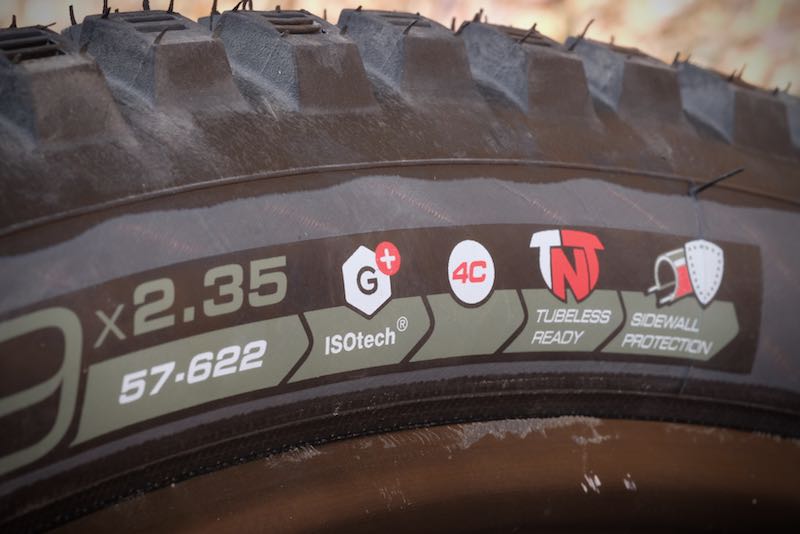Welcome to Tire Tech, Bikerumor’s mostly-weekly series on bicycle tires. Like our Suspension Tech and AASQ series, we take your questions about tires, whether it’s road, cyclocross, fat, plus, gravel, or mountain bike, and get answers from the brands and people behind them.
Last week, Vittoria’s Ken Avery started the conversation on mountain bike tire design with a top-level view of the casing, materials and use considerations that go into designing a new tire. This week we get into the nitty-gritty of tread designs. As he said about overall tire design, creating tread patterns is “…all about compromise. What you gain with one attribute often comes at the sacrifice of another.”
Once Vittoria’s engineers have established their desired criteria, they turn their attention to the specific trail conditions where the tire will be put to use. Several factors influence a tire’s width, volume, and casing construction, but surface conditions determine the tread features.
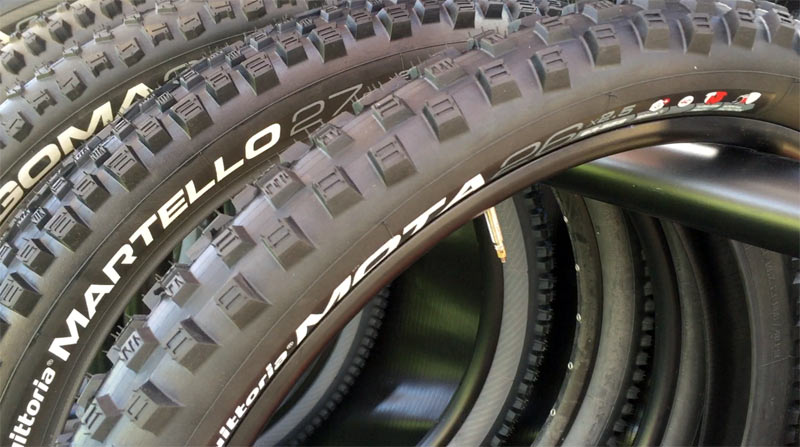
The basics of tread design include variables like knob sizes, depth, shape, and the use of any additional features like siping, stepped edges, or ramps. The spacing between the nobs has a direct impact on traction and rolling resistance. Closely spaced lugs roll well, but don’t shed mud and limit the amount of edge contacting the ground. Big knobs spaced tightly together also add a lot of weight to the tire.
Avery brought up an interesting parallel between mountain bike tires and basketball shoes. Just because basketball shoes don’t have any lugs, that does not mean they lack traction—on a hard flat surface. Likewise, the tread features on a tire must be paired to the appropriate surface. A heavily lugged tire on smooth hardpack trails is far from ideal.
A quick look at Vitoria’s latest tires shows heavy use of siping. The little grooves and notches cut into each knob help it flex with the desired amount of movement. It allows the individual lugs to have enough bulk to present good edges without the firmness of a hard cleat. The siping gives each lug a specific direction of flex as well, rigid on one axis and flexible in the other.
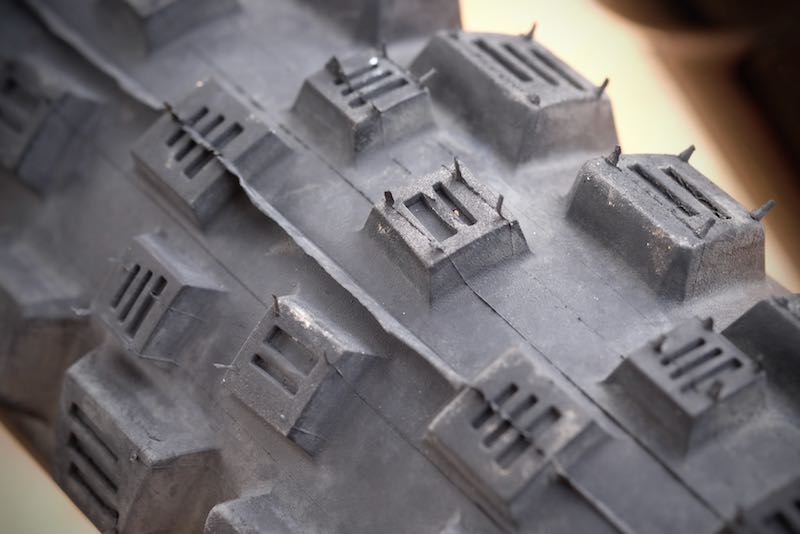
Steps on the knobs act a bit like ramps as they cut into the trail like little saw teeth. Ramps are important on the leading edge of a knob as they help reduce rolling resistance while still permitting the use of a tall lug feature.
How the knobs are arranged on the tire is equally important. Most of Vittoria’s tires have well-defined cornering grooves at the outer edge of the contact patch. According to Avery, “These voids that run the length of the tire isolate the outer knobs and act like sharpened edges on a ski.” And you have to use that edge properly to get the full benefit of it. Sufficient air pressure is essential to giving the outer lugs the support they need to bite the trail.
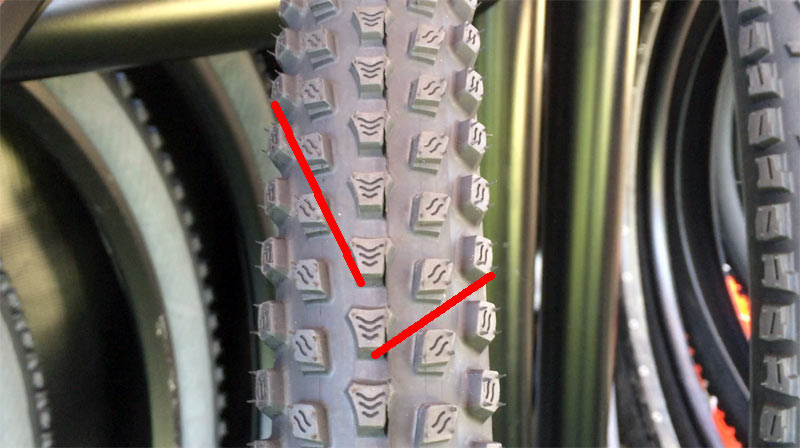
And that common V-shape in the layout of the tread blocks? This angular alignment of the lugs helps with cornering performance as it places a row of lugs perpendicular to the turning forces to maximize traction.
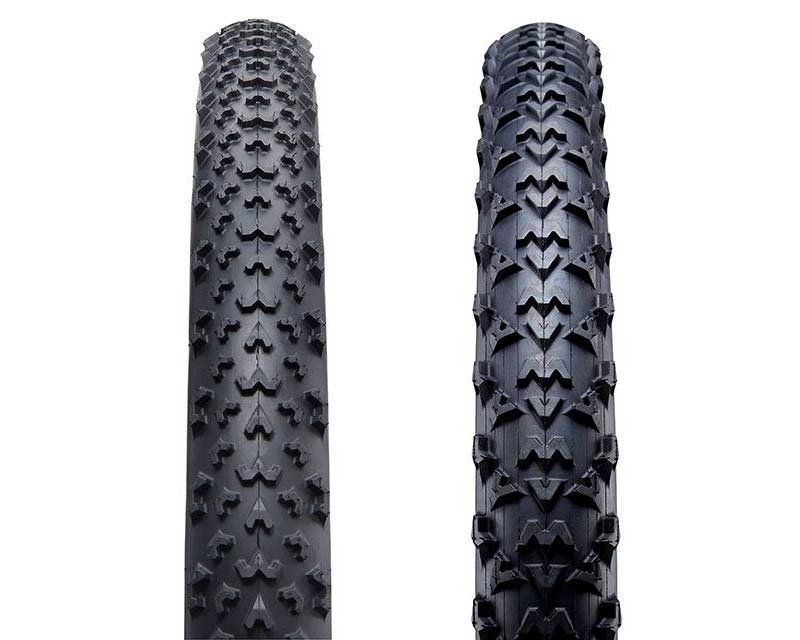
What about front and rear specific designs? Unlike Tom Ritchey who advocates for wheel-specific tread patterns, Avery believes a tire made for certain conditions will work equally well on either wheel. “If you solve the puzzle and create a good pattern, it can be used front or rear.” This is not to be confused with tire direction, though, as some patterns work better in one direction for the front and the other for the rear. For example, square leading edges on the rear can act like paddles to push the bike forward through certain types of dirt (or mud), but would only add rolling resistance at the front.
As is so often the case, a quick look at the entire line of Vittoria tires shows a lot of similarities across the entire spectrum of mountain bike tries. Avery said, “Once you know what works, you just make subtle changes according to your different needs.” That echoes what frame engineers say about tube shapes or suspension designs.
From my personal experience, it also provides consistency in feedback from one tire to the next. When I swap from a Martello to a Mota there is a familiarity that inspires confidence.
After our long chat about tire designs and the nuance of tread features, I mounted a pair of Martellos to my favorite Rocky Mountain Instinct and hit the trails. Stay tuned for a full review of those tires put in the context of what I learned from Ken Avery.
Pumped on this? Got a tire-related question you want answered? Email us. Want your brand or product featured? We can do that, too.
